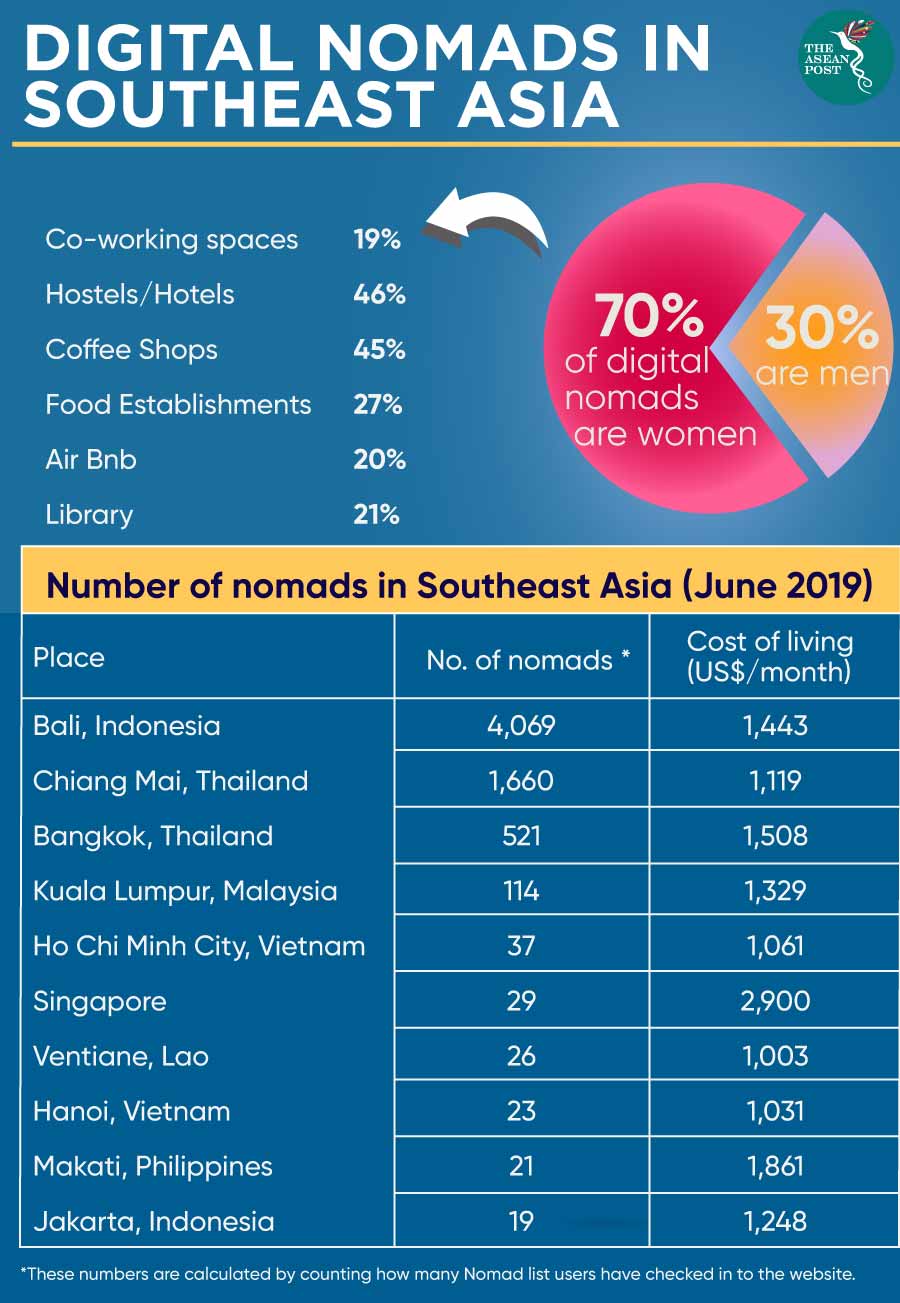A digital nomad is not a job, but a work-travel lifestyle. They are a breed of enterprising individuals who make their living while travelling the world. They are location-independent and use technology to perform their jobs. Technology has allowed for new forms of working environments to thrive, rendering formal workspaces a thing of the past.
Professions that digital nomads usually take up are writing and blogging, web design, software development and the occasional photography. But there are also researchers, accountants and journalists who take up the work-travel life. They can be freelancers, business owners or even employed by companies venturing into remote working.
In 2018, a survey conducted by FlexJobs, a website that offers curated remote and flexible jobs, found that on average digital nomads are usually married females aged between 30 to 40 years, working at least 40 hours a week. In the same survey, 70 percent of digital nomads were women. Digital nomads often work from cafes, coworking spaces, their hotels or hostels.
Tourism market
Digital nomads tend to favour ASEAN countries such as Thailand and Vietnam for its lower cost of living (against stronger foreign currencies).

In 2017, a global survey was conducted by PeoplePerHour – a UK-based online platform that gives businesses access to freelance workers – to create a “digital nomads by city” index. It found that Bangkok, Thailand came in seventh place, followed by Kuala Lumpur, Malaysia in 11th and Singapore in 12th. This ranking, however, did not include several other Southeast Asian cities that are well known for their digital nomad communities.
According to nomadlist.com – a website that ranks cities by their nomad-friendliness – based on factors such as living cost, internet speed and entertainment options, Thailand is the place millennials head to for comfort, affordability and a warm climate. Chiang Mai’s digital nomad communities are one of the best in the region. However, Bali remains one of Indonesia’s most popular destinations for its four million tourists and digital nomads.
Work-travel appeal
The digital nomad lifestyle is one of the fastest growing lifestyles in an age of remote work and shared workspaces.
Technology is shaping the way youth in Southeast Asia live and work. The rapid adoption of digital technologies, increasing affluence, and urbanisation, together with government efforts to bridge the region’s populations, cultures and island archipelagos are some of the reasons attracting digital nomads to Southeast Asia.
For digital nomads, the region’s widespread access to the internet, deeper penetration of mobile connectivity and stable electricity is as important as internet speeds. Battling dodgy Wi-Fi connections is not ideal when deadlines are fast approaching. Thailand tops the region with the fastest average internet speeds at 15-40 Megabits per second (Mbps) with Indonesia’s at 18-20 Mbps. The internet economy in the region is worth a massive US$50 billion and the market is growing annually.
However, the era of 5G could arrive anytime soon. 5G is the fifth generation of cellular mobile communications and is the successor to 4G (LTE/WiMax), 3G (UMTS) and 2G (GSM) systems. 5G connectivity is expected to come with a much higher bandwidth and reduced latency which could save energy and reduce costs.
The influx of digital nomads into Southeast Asia is certainly advantageous because any type of tourism has the potential to spur economic development. However, there is also a dark side to the curated lifestyle of digital nomads. According to one digital nomad, the trending lifestyle is “built off the back of impoverished nations, and the exploitation of less privileged people.”
Digital nomads with their strong currencies can easily outspend locals in a particular area. This influx of wealth into poorer areas in the region can damage economic ecosystems in the long run. It may also displace long-term residents due to the rising cost of living. In the end, it is important to realise that digital nomads are still tourists with no stake in the spaces they briefly occupy.
Related articles:
